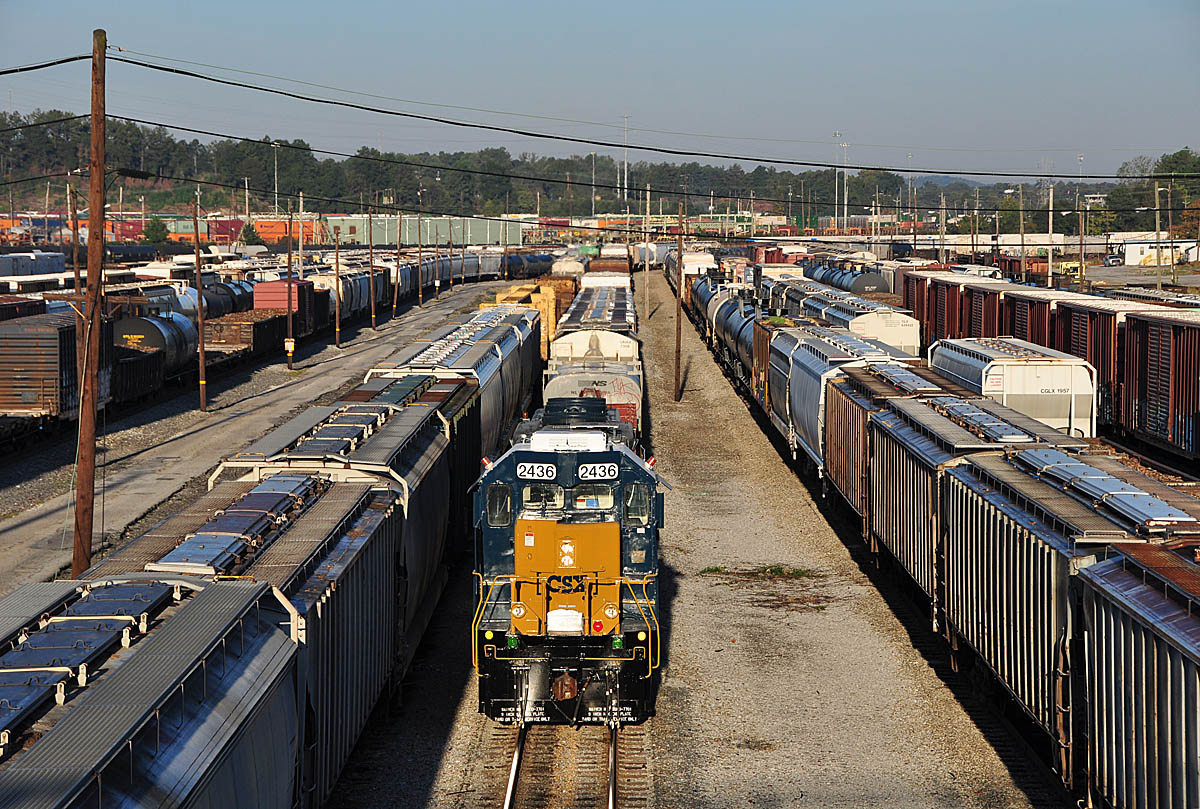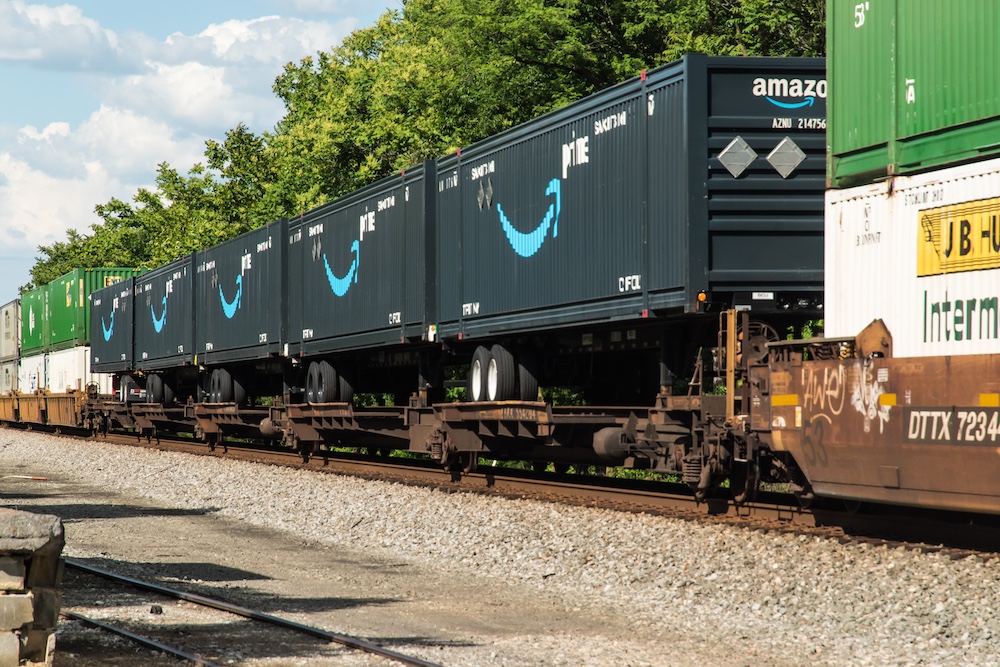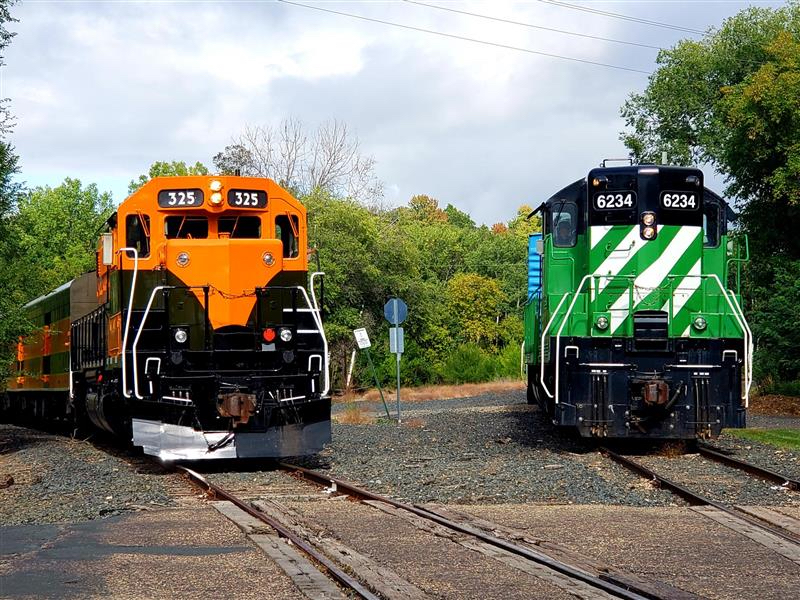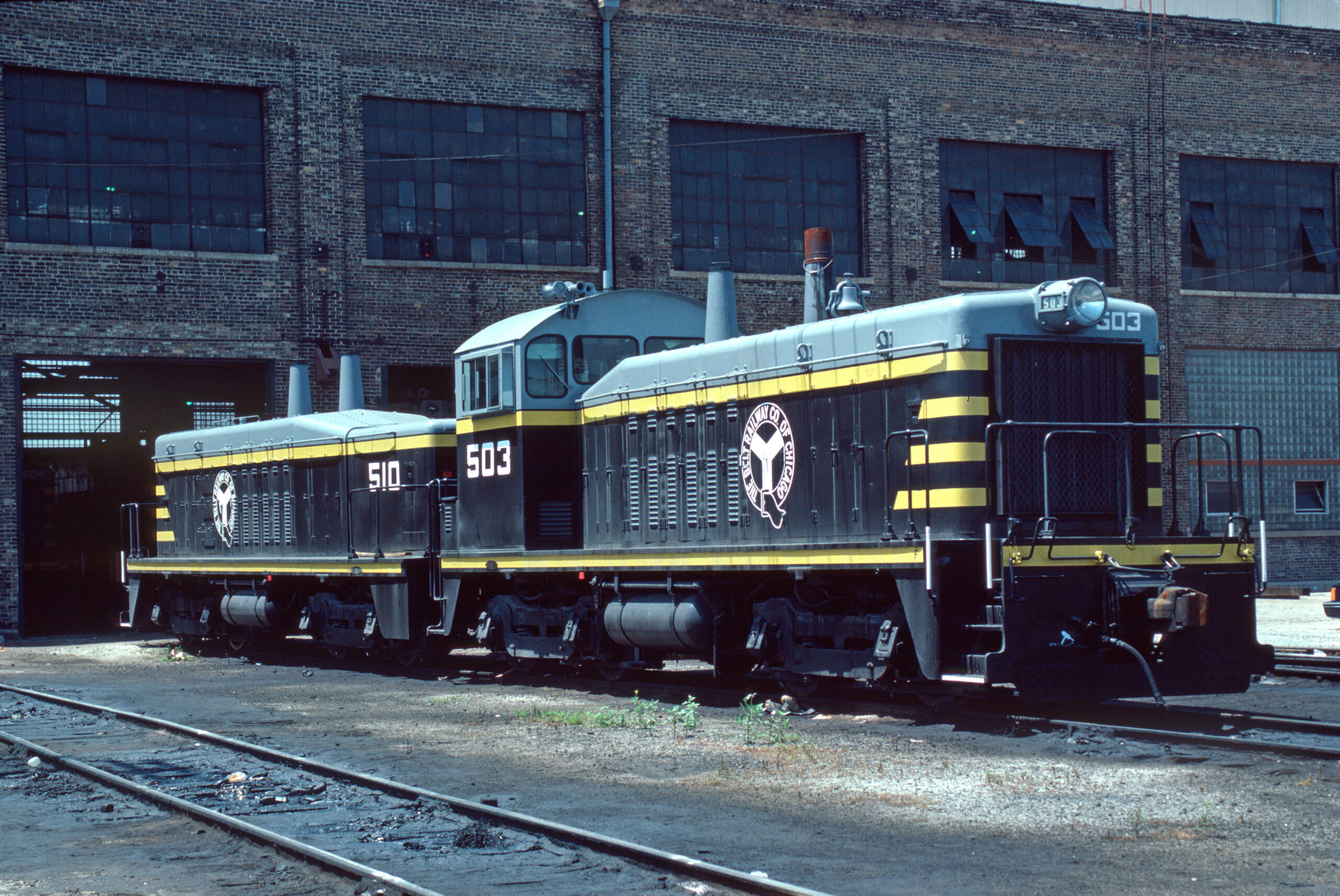Traffic control systems

Running a safe operation is not as simple as you might think. Every train must have authority to occupy the main track before it can begin moving. There are several types of authorities, but usually only one type is in effect on any given piece of track. Maintenance people must also have authority to be on or obstruct the track.
The common types of authority used to direct train movements today are interlocking signals, Centralized Traffic Control (CTC), Rule 251, Track Warrant Control (TWC), Direct Traffic Control (DTC), Form D Control System, and Yard Limits. A few roads (for example, the Long Island Rail Road and the South Shore Line) still have timetable and train order rules, but most of their operations are conducted under CTC or Rule 251.
Let’s look at the different types of authority under which trains may move.
Interlocking signals. Interlocking signals permit movement within the limits of the interlocking plant bounded by those signals. As their name implies, interlockings are arrangements of signal appliances (once mechanical, now electronic) that are designed so that conflicting movements cannot be authorized. Interlockings may be manually or automatically controlled. Automatic interlockings are most common at the remote crossings of two railroads, and operate on a first-come, first-served basis.
Centralized Traffic Control. CTC, sometimes called TCS (Traffic Control System), is familiar to train watchers. CTC is commonly found on high- or medium-density lines, where the signal equipment cost can be justified by the reduction in train delays. Conceptually, CTC is a series of interlockings all controlled by one person. Trains are governed by signal indications, some of which provide movement authority. The traffic-control machine or computer software is designed so that conflicting authorities cannot be granted. From a console, now typically a computer screen, the dispatcher remotely controls signals and powered switches, which are most often found at the ends of sidings and at crossovers between main tracks. Trains need only to observe the controlled signals to obtain movement authority.
Rule 251. Rule 251 allows a train to operate on signal indication, but only with the current of traffic established for the track. Rule 251 is usually used with Double Track. (“Double Track” is not defined the same as “Two Main Tracks” on Western roads. Double Track has a designated current of traffic for each track, and is signaled only for trains moving in that direction. Two or more Main Tracks are each signaled for movement in either direction, and controlled by CTC.) The signals in Rule 251 territory are controlled by track occupancy, not the dispatcher. This type of operation is common on commuter lines where most or all trains operate at the same speed.
Track Warrant Control. Track Warrant Control authorizes the dispatcher to verbally instruct the train to proceed, usually via radio. The dispatcher selects the stations or mileposts between which the train may move – a segment of track known as the authority limit. Warrants may contain conditions such as “not in effect until after the arrival of…” The train crew writes the instructions on a Track Warrant Form and repeats them to the dispatcher for verification. Nothing prevents the dispatcher from erroneously issuing overlapping or conflicting warrants, though most large railroads now require him to simultaneously key the authority into a computer, which checks for conflicts. TWC is used by most Western roads and Norfolk Southern on medium- and low-density lines. The TWC Form is also used in CTC territory but not to authorize movement. It serves as a checklist of Track Bulletins the train crew should have received, like the old Clearance Form A used with train orders. (Track Bulletins address maintenance work and track conditions, including temporary speed restrictions.)
Direct Traffic Control. Direct Traffic Control is similar in execution and application to TWC, but the railroad is divided into pre-defined “blocks.” The dispatcher authorizes a train to proceed in one or more of the blocks but does not have the flexibility in the selection of authority boundaries available under TWC. Kansas City Southern, Union Pacific, and CSX are three railroads that use DTC on portions of their routes.
Form D Control. A Form D Control System (DCS) is used by Northeastern railroads that have adopted the NORAC Rule Book. It is a variation of TWC. Canadian railroads, whose dispatchers are called Rail Traffic Controllers, use an Occupancy Control System (OCS) Clearance also similar to TWC.
Yard Limits. Yard Limits authorize any train to move at a speed that allows it to avoid conflicts. This is the railroad equivalent of aviation’s visual flight rules. A yardmaster may direct yard movements, but does not provide movement authority. Trains and engines must still watch out for each other. Yard limits can apply beyond yards, such as on branch lines where speeds are slow and train meets are rare.
TWC, DTC, DCS and Yard Limits do not require wayside signals. When signals do exist, they serve primarily as a protective overlay to the movement authority and do not convey the authority to occupy the main track.
Protecting track workers
Each system of train movement authority must also include provision for protecting maintenance vehicles and workers, as well as any work trains that may be moving back and forth within a section of track.
Under CTC, the usual procedure is for the dispatcher to grant “Track and Time Authority” to the track foreman, vehicle operator, or work train. This authority protects the recipient’s use of a designated track between locations where signals are controlled by the dispatcher (called control points). These signals can’t be cleared into the track and time limits.
Another method requires train crews to contact a foreman before passing through (or on multiple tracks, adjacent to) work zones. This is called a “Form B Track Bulletin” on Western roads. Rule 251 territory has similar procedures.
In TWC, DTC, and DCS territory, work crews and vehicles are treated in the same manner as trains. Verbal authority from the dispatcher is required to occupy or obstruct the tracks.
Essential documents
Railroads publish two documents that help railroaders understand how trains are to be moved across their systems: the Rulebook and the Employee Timetable. Employees are required to study these documents, to have them available while working, and to meticulously obey them. The Federal Railroad Administration requires that railroads publish and use these books. And on certain subjects (such as flagging) the FRA also dictates their contents.
These documents define the procedures by which operations will be conducted – the “when and how” of railroading. For a train watcher, they can make train-watching more interesting and meaningful. Expired rulebooks and timetables are readily available at swap meets and by mail order.
Employee timetables indicate what type of authority is in effect for each piece of track. No train can occupy the main track without an authority that is traceable back through the timetable to the rulebook. Consider a train moving under Track Warrant Control. The engineer will use the timetable to verify that the track he is on is controlled by track-warrant authority. The rulebook, meanwhile, will tell him precisely how operations are to be conducted under TWC.
Rulebooks
Railroaders commonly refer to their rulebook as the “Bible.” Early editions often looked like a Bible, with a black cover and red-edged pages. Although through the years the Association of American Railroads has issued and revised a “Standard Code of Operating Rules,” each railroad could and did vary the contents to suit its particular circumstances and preferences.
There are several types of rulebooks, actually. But it is the Operating Rulebook that defines and describes the way train movements are conducted. Topics covered include definitions, signal use, train movement and authority, and block signal systems. Other rulebooks of cover safety, air brakes and train-handling, radio procedure, hazardous materials, and maintenance of way.
Since many train crews operate over “foreign” lines (i.e., other railroads) and thus have to be qualified on the rules of two or more railroads, many roads use common rulebooks. Today, all the major Western and Midwest railroads use a book called the “General Code of Operating Rules” (GCOR). Many northeastern railroads, including Amtrak’s Northeast Corridor, use the Northeast Operating Rules Advisory Committee (NORAC) rulebook. Norfolk Southern, CSX, Florida East Coast, Grand Trunk, Illinois Central, KCS, and some smaller lines each have their own books. One rulebook covers all lines in Canada.
Rulebooks have historically been written in an arcane grammatical style, more resembling a legal or military document than an instructive manual. However, the NORAC and GCOR books were more recently been rewritten to make them more understandable to the inexperienced and to those whose reading skills are less developed. Old rulebooks were permanently bound volumes and were not reissued for many years. Railroads now commonly issue loose-leaf binders to hold the pages, making more frequent revisions possible.
Characteristically, specific locations are never mentioned in a rulebook. The rules are general in nature. Another document, the timetable, notes the specific places where certain rules do or do not apply.
Timetables
There are two types of timetables. Public timetables are issued to inform travelers when passenger trains will operate. Employee timetables, on the other hand, contain a treasure of detailed information about the railroad and how it operates.
Conspicuously absent from today’s employee timetables are times, but this was not always the case. When trains were run by “timetable and train order,” the schedule in the employee timetable was the actual authority for the train to proceed. Very simply, if a train was superior to others by class (or by direction against opposing trains of the same class), and it held no train orders restricting that superiority, it could proceed knowing the line would be clear. Inferior trains, which carried a timetable and knew the schedule of superior trains, were required to clae the main track in time to let the superior train pass.
Radio, fax machines, and remote signal and switch control allowed the timetable system to be replaced by the current methods of operating authority mentioned above (CTC, TWC, etc.) using signal indications or verbal authority from the train dispatcher. Under these systems, trains are granted movement authority on a case-by-case basis, not a standing timetable. Even though a train might run at the same time every day, it is not officially scheduled as far as railroad operations are concerned.
Amtrak and commuter railroads still publish public timetables for the convenience of riders, but these timetables convey no official operating authority. In the employee timetables of Amtrak and commuter railroads, passenger train schedules are included as appendices, but they are for information only, without any authority.
There are two sections to today’s employee timetable. The first section, the station list, provides a geographically ordered listing of all the stations on each subdivision, with milepost locations and facilities such as sidings and yards. These pages formerly included the train schedules. Today, these pages show the type of movement authority (CTC, TWC, DTC, etc.) in effect on that subdivision, speed limits, equipment detector locations, radio channels in use, and a plethora of other information.
The second section is called “Special Instructions.” Some instructions apply to all the territory covered by the timetable, including specific information not appropriate for the rulebook, such as speed restrictions based upon train consist, motive power, or weather conditions, and also revisions to the rules themselves.
Most railroads, while a party to NORAC or GCOR rulebooks, revise many rules with their own, sometimes better, ideas. Two unaffiliated roads will rarely publish a timetable with precisely the same format or presentation of content.
Traditionally, separate timetables were issued for each division but now many railroads issue one for their entire system. Like rulebooks, many timetables are now issued in loose-leaf format, and are generally reissued every six to eight months. When a revision is necessary between editions, a General Order or General Bulletin (terminology varies by railroad) is issued. When the new timetable is published, it includes all permanent revisions from the General Orders, which are then cancelled.














I LIKED THE ARTICLE I THOUGHT IT WAS VERY INFORMATIVE!
LIKED THE ARTICLE. THOUGHT IT WAS VERY INFORMATIVE!
2nd paragraph, topic TIMETABLES, typo. I would guess you wanted the word CLEAR
"were required to clae the main track"
Cool Article!